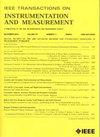A Novel High-Precision Lightweight Mathematical Model of Underwater Active Electrosense and Its Application on Object Pose and Size Estimation
IF 5.6
2区 工程技术
Q1 ENGINEERING, ELECTRICAL & ELECTRONIC
IEEE Transactions on Instrumentation and Measurement
Pub Date : 2025-07-11
DOI:10.1109/TIM.2025.3588219
引用次数: 0
Abstract
Weakly electric fish employ the self-established electric field to sense the cluttered and turbid underwater environment. Previous works on modeling underwater active electrosense have predominantly involved analytical models derived from the Rasnow model, as well as numerical models such as the finite element method (FEM) and the boundary element method (BEM). Both are hindered by poor precision and heavy computational burden, making them difficult to apply in real-world engineering. In this article, a high-precision and lightweight model excited by an electric dipole source was established for the first time. The simulation and experimental results validate the effectiveness of the proposed model and its superiority compared to the Rasnow model. A simplified slender robot equipped with active electrosense was made to estimate object pose and size with a purely model-based method. Despite some model simplifications and experimental errors, both the pose and size estimation achieved satisfactory results. This article offers promising perspectives on high-precision real-time processing for marine robots equipped with active electrosense.一种新型高精度轻量级水下有源电感数学模型及其在目标姿态和尺寸估计中的应用
弱电鱼利用自身建立的电场来感知杂乱浑浊的水下环境。以往关于水下有源电感的建模工作主要涉及从Rasnow模型衍生的解析模型,以及有限元法(FEM)和边界元法(BEM)等数值模型。这两种方法都受到精度差和计算量大的限制,难以在实际工程中应用。本文首次建立了由电偶极子源激发的高精度轻量化模型。仿真和实验结果验证了该模型的有效性,以及与Rasnow模型相比的优越性。采用基于模型的方法,设计了一种带有主动电感的简化细长机器人来估计物体的姿态和尺寸。尽管存在一些模型简化和实验误差,但姿态和尺寸估计都取得了令人满意的结果。本文为装备有源电传感的海洋机器人的高精度实时处理提供了有希望的前景。
本文章由计算机程序翻译,如有差异,请以英文原文为准。
求助全文
约1分钟内获得全文
求助全文
来源期刊

IEEE Transactions on Instrumentation and Measurement
工程技术-工程:电子与电气
CiteScore
9.00
自引率
23.20%
发文量
1294
审稿时长
3.9 months
期刊介绍:
Papers are sought that address innovative solutions to the development and use of electrical and electronic instruments and equipment to measure, monitor and/or record physical phenomena for the purpose of advancing measurement science, methods, functionality and applications. The scope of these papers may encompass: (1) theory, methodology, and practice of measurement; (2) design, development and evaluation of instrumentation and measurement systems and components used in generating, acquiring, conditioning and processing signals; (3) analysis, representation, display, and preservation of the information obtained from a set of measurements; and (4) scientific and technical support to establishment and maintenance of technical standards in the field of Instrumentation and Measurement.
 求助内容:
求助内容: 应助结果提醒方式:
应助结果提醒方式:


